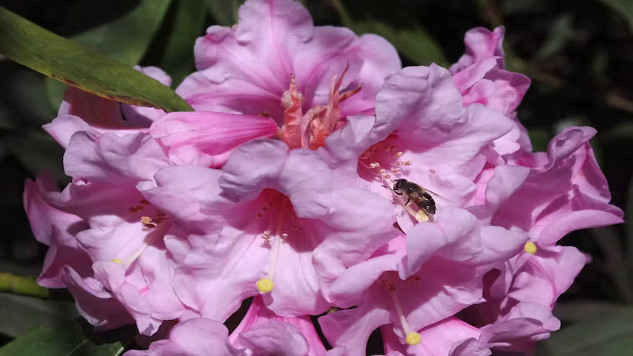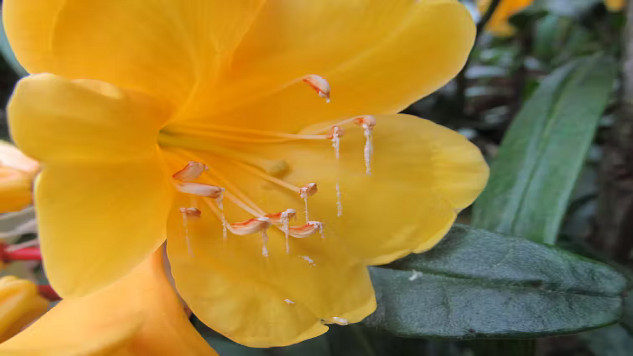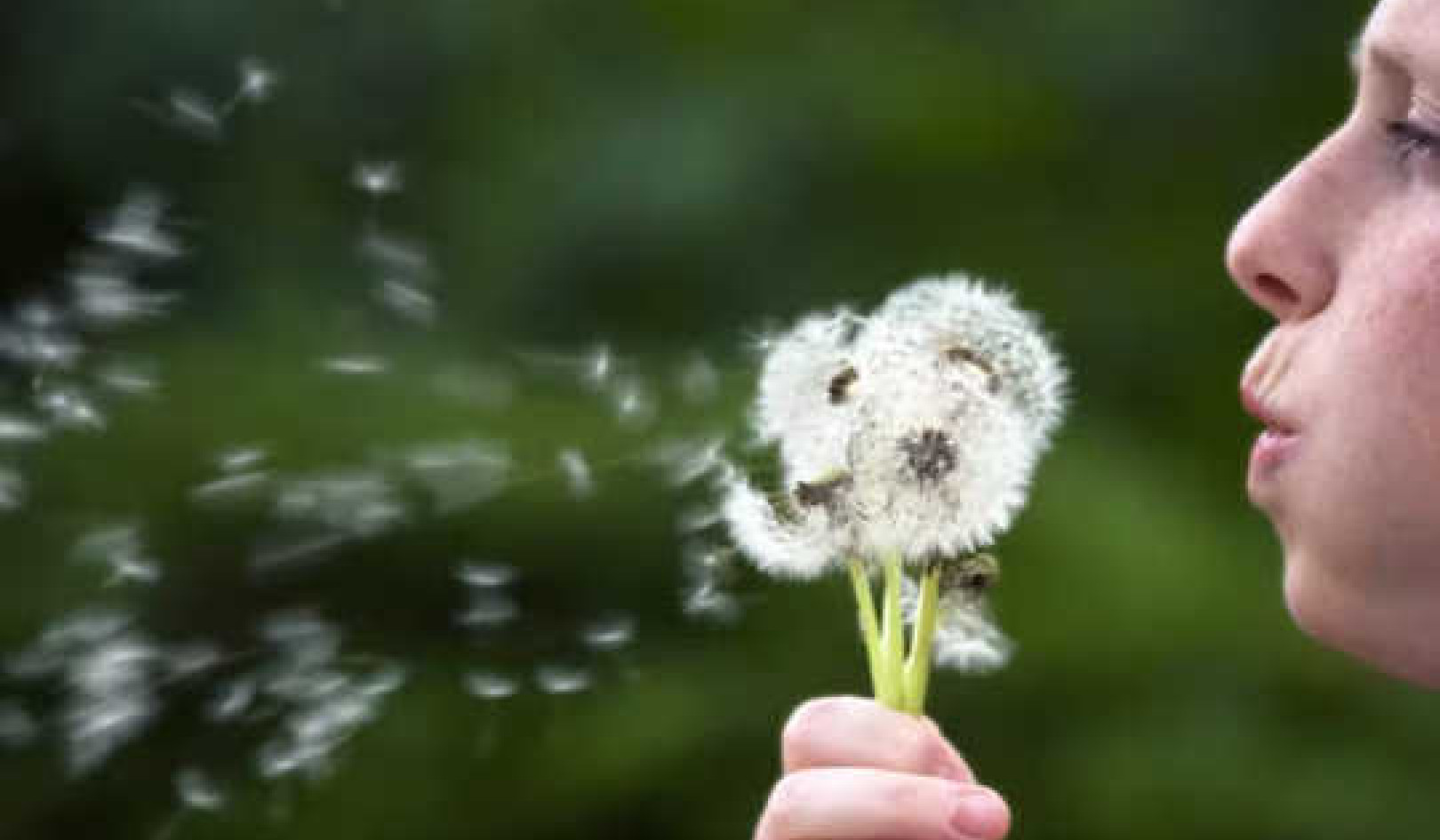
If you have a rhododendron in your garden or pass one by on an afternoon walk perhaps you think of it as just a colourful and pretty shrub. You may have heard that they come from the Himalayas, and that they are invasive plants that destroy ecosystems.
Neither of these is quite accurate. Rhododendrons have an ancient legacy older than the Himalayas and a history intertwined with poison, medicine and folklore.
Rhododendrons may be deciduous or evergreen, anything from a tree to a creeping dwarf shrub, with leaves a centimetre to a foot long, and flowers any shade of white, yellow, orange, pink, red or purple. There are around 1000 species in total, and modern DNA-based work confirms that all “azaleas” are in fact species of rhododendron.
Rhododendron fossil pollen is easy to identify, as are rhododendron seeds, and some of these fossils are 60 million years old. By contrast, the Himalayas as we know them only began forming 50 million years ago, when India collided with Asia. So while around half of all rhododendron species are endemic to the Himalayas (meaning they grow nowhere else), the genus cannot have originated there.
Over 60 million years rhododendrons spread around the northern hemisphere, from boreal woods and high mountains, to tropical rainforests, where many species perch on high branches as epiphytes (a plant or plant-like organism that grows on the surface of another plant). They reached North America, Japan, parts of Europe, most of Asia and even Australia. It was native in the British Isles for a while, until the later ice ages drove it out.
But the mountain ranges and plunging valleys of the Himalayas created a dizzying diversity of rhododendrons as neighbouring populations were isolated from each other. Tourists flock to see the colourful blooms found there, especially in Yunnan and the Baili areas of China.
Rhododendron pollen has microscopic tentacles that make it sticky. Pollen shoots out from the stamens like strings from a party popper when triggered by the buzzing of an insect, and drapes itself across the body of the pollinator.

Rhododendron pollen shoots out in strings. Richard Milne, CC BY-SA
Detractors might say rhododendrons are invasive. But that only applies to one species out of over a thousand – the nefarious Rhododendrom ponticum. If left uncontrolled, this particular rhododendron will eventually dominate the habitat to the virtual exclusion of all other plant life. Other species do not have this problem.
Folklore remedies with risks
There is also far more to humanity’s relationship with rhododendrons than horticultural beauty, and the never-ending battle against Rhodendrom ponticums in the wetter parts of Britain. Rhododendrons have been used to treat everything from colds and diarrhoea through leprosy and STDs, to flagging sex drive and diseases of pigs. Few of these have been tested scientifically.
In Labrador, north-east Canada, infusions of the local rhododendron are commonly drunk. People claim it has many health benefits, but the evidence is limited.
But like so many medicinal plants, some rhododendrons are poisonous, and not to be consumed by the unwary. Some species, including the common yellow azalea, contain toxins in their nectar, which can cause sickness and bad “trips” in humans.
Cause of ‘mad honey disease’
Eating raw honey in some places in the world including Turkey can cause “mad honey disease”. This can happen when bees gather nectar from rhododendron flowers in certain places and times of year.
The symptoms of mad honey disease were first recorded around 400BC by the Greek historian Xenophon. According to legend, during a war in 67BC, an army of 1000 Roman soldiers in Turkey were rendered insensible after consuming the pots of honey locals had left out for them, and consequently were slaughtered by the followers of King Mithradates. Much more recently, in some time around 2010, there was a case in Scotland, when a photographer licked two tiny drips of nectar from his hand in a botanic garden. Like most victims, he recovered within a few hours.
Rhododendrons are also poisonous to farm animals which will suffer paralysis and slowly die if they eat the leaves, unless given the antidote, black tea.
A Chinese story tells of how a herd of cattle became drunk after witnessing the beauty of glorious red rhododendron flowers in the Baili scenic area. But the story probably was based on the effect the plants had on cows eating the unfamiliar shrub. Fortunately, animals including sheep can learn not to eat it, as has happened in Scotland.
Botanical fables
The numbers of rhododendrons in western China is probably why they feature in so many myths and legends. The stories are often tragic. In one story doomed lovers are transformed into Dujuan birds who fly around crying tears of blood, that turn into the plants. Dujuan are cuckoo-like birds which pollinate red rhododendrons, and are strongly linked to them in folklore.
In the Dongba religion of the Naxi people, who live in the Himalayan foothills of the Yunnan province, is dramatic. They believe three huge rhododendrons guard the entrance to the world of the dead. They also believe swords and armour made from the plants played key roles in the epic battles that shaped their world.
In the west, rhododendrons have also featured in stories. “Massed red rhododendrons” are repeatedly used to evoke the spirit of the title character in Daphne du Maurier’s 1938 Gothic thriller Rebecca.
So next time you walk past a rhododendron, perhaps you’ll think of them differently.![]()
Richard Milne, Senior Lecturer in Plant Evolutionary Biology, The University of Edinburgh
This article is republished from The Conversation under a Creative Commons license. Read the original article.
ing























